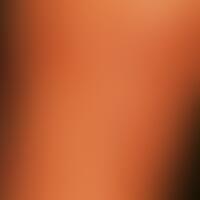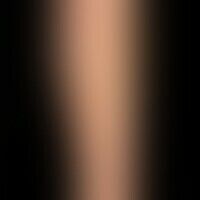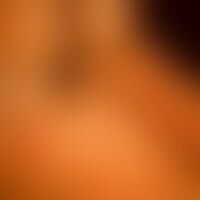
Contagious impetigo L01.0

Necrobiosis lipoidica L92.1
Necrobiosis lipoidica: sharply delimited, confluent marginal, reddish-brownish, centrally faded, atrophic plaques, increase in consistency in the marginal area

Collagenosis reactive perforating L87.1

Leg ulcer L97.x0

Venous leg ulcer I83.0
Ulcus cruris venosum. deep, punched out ulcer on the lower leg in CVI. the edges are macerated whitish in places. there is a film of zinc paste in the surrounding area.

Necrobiosis lipoidica L92.1
Necrobiosis lipoidica: detailed picture with pronounced atrophy of the surface epithelium.

Venous leg ulcer I83.0

Necrobiosis lipoidica L92.1
Necrobiosis lipoidica: Medal-shaped plaques with pronounced central atrophy and bizarre translucent vascular structures.

Venous leg ulcer I83.0

Venous leg ulcer I83.0

Arterial leg ulcer L98.4
Ulcus cruris arteriosum: Sharply defined, painful ulcer on the back of the foot that seizes the tendon.

Arterial leg ulcer L98.4
Ulcus cruris arteriosum:Painful arterial leg ulcer of the lower leg and the back of the foot that has been present for 1 year and is continuously growing and sharply defined; proven PAVK in smokers' history and type 2 diabetes; destruction of tendons (arrow markings).

Venous leg ulcer I83.0
Ulcus cruris venosum. solitary, chronically stationary, retroangulary localized (typical CVI position), 7.0 x 4.0 cm in size, sharply and angularly limited, moderately painful (depending on position), red ulcer. extensive, brown induration of the ulcer environment (dermatolipofasciosclerosis). detectable chronic venous insufficiency.

Dyshidrotic dermatitis L30.8
eczema, dyshidrotic: detailed picture with inensively itching intraepithelial vesicles, circumscribed scaling and brownish felts (healed efflorescences). no signs of atopy. no contact allergy.

Keratoma sulcatum L08.8
Keratoma sulcatum: Disseminated, as if punched out, smallest corneal layer defects; distinct hyperhidrosis of the feet with strong foetor.









